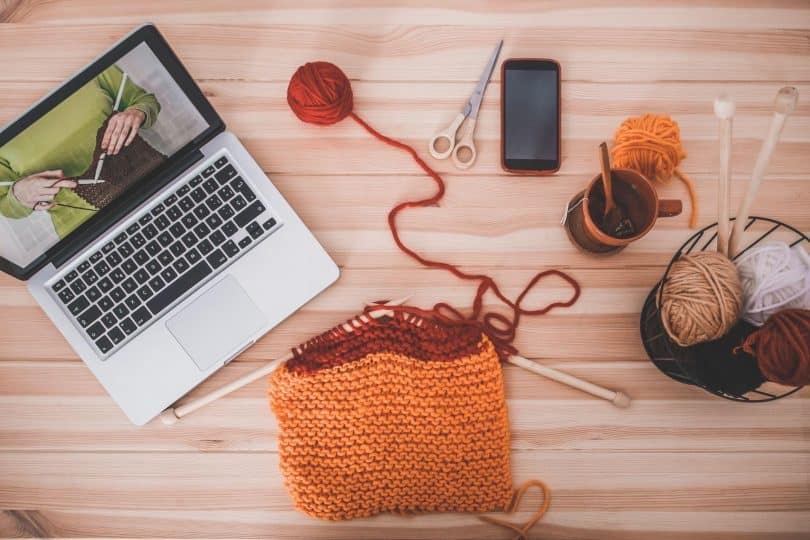Today, mastering repair expertise has become easier than ever! Online tutorials mean anyone can learn how to fix stuff when it suits them. There are videos and advice for all restoration needs, whether a faulty electronic device or a broken appliance.
In Keith Mendivil‘s guide, you can find step-by-step instructions and videos showing the restore process with a few clicks. The topics range from changing light bulbs to fixing computer motherboards. These resources give people the power to fix things themselves and save money.
Online classes suit all learning styles. Visual learners can watch videos to see how each step works. Those who prefer written instructions can find comprehensive advice with all the details. Everyone can find a tutorial that works for them.
Plus, networked classes create a learning community. Users can comment and share their experiences. They can learn from each other’s mistakes and successes. This boosts understanding and adds to their knowledge.
Contents
- 1 The Growing Popularity Of Online Tutorials For Learning Repair Skills
- 2 The Benefits Of Using Videos And Guides For Learning Repair Skills
- 3 Choosing The Right Online Tutorials For Repair Skills
- 4 The Different Types Of Online Tutorials Available For Repair Skills
- 5 Best Practices For Using Online Tutorials Effectively
- 6 Common Challenges And How To Overcome Them When Using Online Tutorials
The Growing Popularity Of Online Tutorials For Learning Repair Skills
Online lessons are necessary for those who want expertise. They offer convenience and accessibility. Also, with platforms like YouTube and educational websites, folks can now learn from the comfort of their own homes.
The great thing about online lessons is that they offer step-by-step instructions. Visual learners can easily follow videos. Those who prefer written instructions can refer to detailed guides. This gives people the choice to use the learning method that works best for them.
Plus, online lessons cover a wide range of topics. Anything from bare household restores to specialized expertise like electronics or plumbing can be found. This means individuals can get the guidance they need without searching multiple sources.
The Benefits Of Using Videos And Guides For Learning Repair Skills
- They show learners how each step is done. This visual element helps with understanding and remembering what is taught.
- Learners can use them flexibly. They can stop, rewind, and replay as many times as they need to get the concepts. This personal approach allows self-paced learning and complete comprehension.
These resources make studying accessible from home. Going to classes or workshops is unnecessary, which saves time and money. And there’s a variety of tutorials, from basic tasks like fixing a dripping tap to complex projects like restoring electronics. This makes it easy for learners of all levels to find content suited to them.
Furthermore, videos and guides often have advice from experienced people. This guidance is helpful and can help learners avoid mistakes. By following the instructions, they can gain confidence in their abilities and improve at repairing things.
Creating a sense of community is exciting about using videos and guides. Many platforms encourage learners to share their experiences, ask questions, and give feedback. This interaction between learners with the same interests enhances studying and promotes lifelong learning.
Choosing The Right Online Tutorials For Repair Skills
The networked tutorial world has changed how people learn repair skills. There are plenty of videos and guides – but it can take time to pick the right ones. Keith Mendivil shares some tips that can help:
- Expertise: Look for classes by experts. Check their credentials and background. Getting tutorials suited to your skill level is essential – beginner or advanced.
- Content: Preview the tutorial content. Make sure it covers the whole process, from diagnosis to solutions. Check if it’s suitable for your skill level.
- Reviews: Read the reviews! Find out what people say about the tutorial. Reviews can tell you about its clarity, effectiveness, and relevance.
Plus:
- Interactive Elements: Some lessons use quizzes or challenges to test your knowledge. This makes learning fun and helps you understand the restoration process.
- Lengthy Tutorials: Avoid long lessons. They can become overwhelming. Choose ones that are concise and comprehensive, focusing on key concepts.
- Formats: Videos, articles, infographics… there are lots of designs. Pick the one that works for you. You can try different forms to keep learning interesting.
Choosing the proper networked tutorial for repair skills may take time and effort. But, prioritizing expertise, reading reviews, and embracing interactive elements and different formats can help. You’ll be well on your way to mastering repair expertise in no time!
The Different Types Of Online Tutorials Available For Repair Skills
Various formats and styles of networked repair skills lessons offer unique studying approaches. These cater to other preferences and skill levels, so anyone can learn to repair things confidently.
- Video Tutorials: Becoming popular, these videos provide step-by-step demonstrations of repair processes. Visuals and explanations help learners go independently and replicate repair techniques.
- Textual Guides: For those who prefer written instructions, these guides have a breakdown of restoring procedures. Often with illustrations or diagrams, so complex concepts are easy to grasp.
- Interactive Platforms: Some networked lessons use interactive platforms to enhance studying. Features like quizzes, simulations, and virtual environments let learners practice restoring skills in a safe setting.
Plus, more innovative methods are available. For instance, virtual reality lessons provide an interactive environment to learn restoring skills by simulating real-life scenarios.
Best Practices For Using Online Tutorials Effectively
Unlock the Power of Networked Tutorials
– Utilize video lessons for visual studying and step-by-step demos.
– Read guides carefully and make sure you understand each step.
– Take your time during tricky sections; rewind or pause if needed.
– Ask questions and share progress with the networked community.
– Try out different tutorial platforms to find what’s best for you.
– Combine networked and also study hands-on practice.
Keep in mind:
– Different people learn differently, so a mix of videos and texts works best.
– Dedication and focus are essential to honing restoring skills.
Common Challenges And How To Overcome Them When Using Online Tutorials
Using networked lessons can be challenging, with unclear instructions and a lack of interaction with the instructor. Plus, you may get delayed feedback on your progress. And let’s remember technical difficulties! But don’t worry; these challenges can be overcome.
Keep motivated and set achievable goals. And remember, practice makes perfect! Remember to experiment with different lessons to find ones that align with your studying style and preferences.







